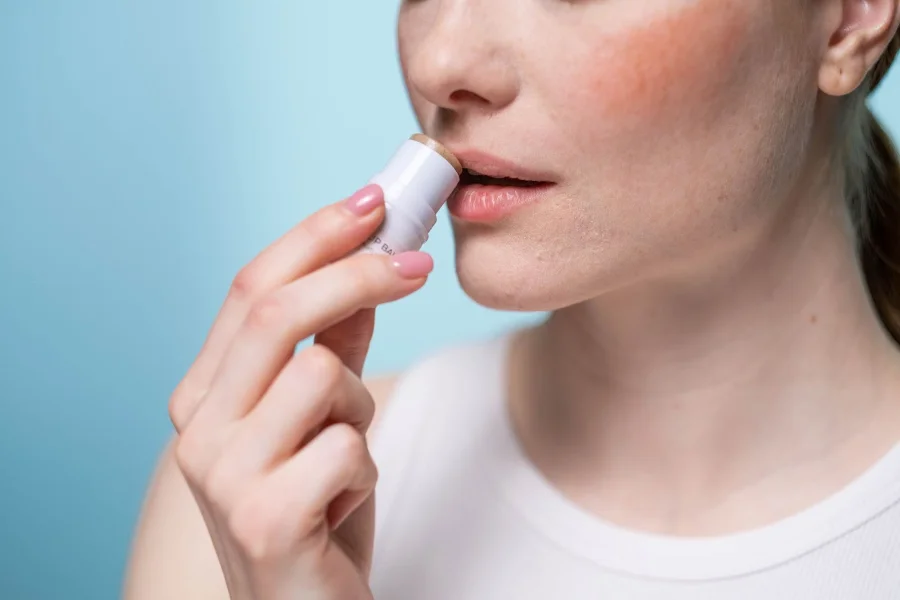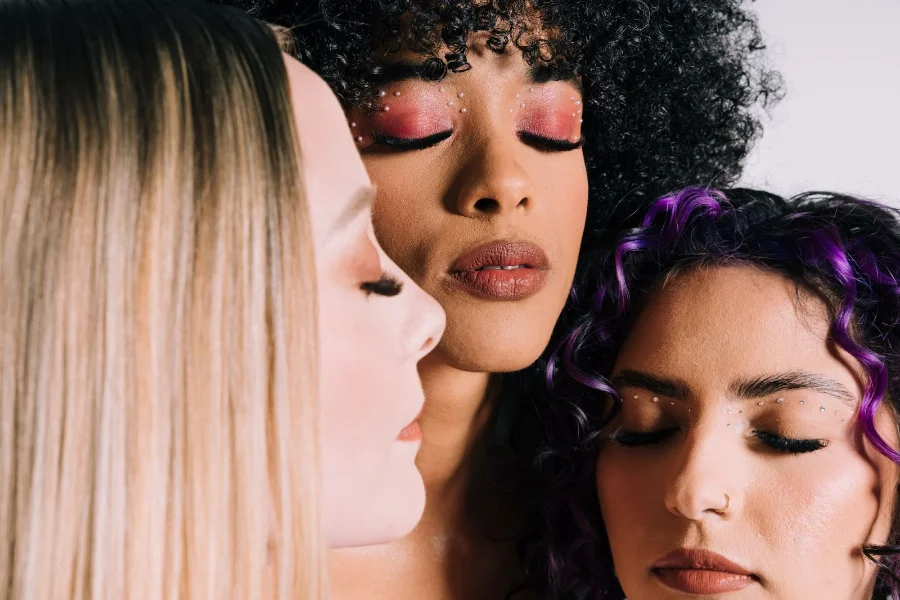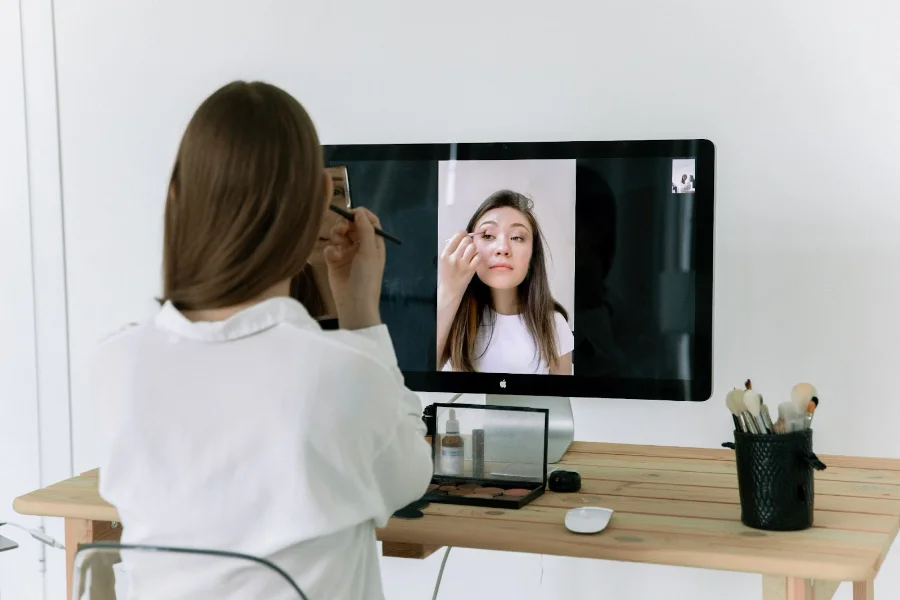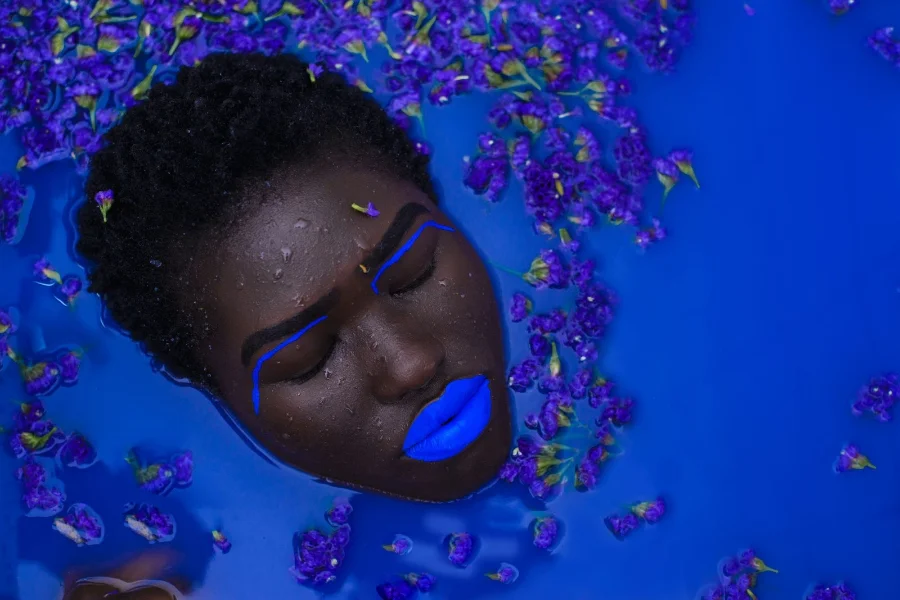According to a recent report, cosmetics comprise 18.2% of the beauty market. In the past, consumers have used makeup to improve their appearance and better fit beauty standards.
But in recent years, modern consumers have been shaking up the industry to introduce artistic expression and inclusivity. This is why the makeup industry is expected to undergo many changes by 2026.
These new makeup trends will cover more than the preferred makeup products. Consumers want brands to introduce more technology in makeup application, fitting those with disabilities and other needs.
Here’s the future of the beauty market in 2026 and how businesses can prepare.
Table of Contents
Overview of 2026 makeup trends
2026 makeup trends
Conclusion
Overview of 2026 makeup trends
The beauty industry isn’t slowing down. According to a research report, the cosmetics industry’s compound annual growth rate will be 5.25% between 2023 and 2029.
Interestingly, the modern makeup enthusiast is very different than one from years past. And Gen Zers represent the biggest part of the consumer base, as their current makeup spending is already at pre-pandemic levels.
The core trends in makeup will be different than they were before. Gen Zers are dismantling beauty standards, embracing flaws, and developing a realistic perception of beauty. Because of this, makeup is now used as an artistic expression and not to improve one’s appearance.
They also have strict standards for brands. Younger consumers prioritize companies that meet their sustainability needs.
With a growing demand for technology, the average consumer expects high-tech solutions from their favorite makeup brands. These vary between VR- and AR-based products and technological tools for disabled individuals.
2026 makeup trends
The 2026 makeup trends vary from technology-fueled makeup tools to all-in-one makeup products. These trends reflect the socio-political global market, rejection of conventional beauty standards, prioritization of artistic expression, technological innovations, and growing awareness of sustainability.
Makeup hybrids

Now that we’re back to pre-pandemic times, the average global beauty user is ready to take over the world. With workers now settled back at work, hustle culture is in full effect.
But since beauty consumers have a full schedule, they demand all-in-one makeup and skin care products to expedite their makeup routine.
An example is a foundation formulated with skincare ingredients. Users are working late to compensate for high inflation and funds lost during the pandemic, and they will need to keep their skin hydrated and glowing for all-day wear.
Consumers will also need easy day-to-night beauty solutions for office parties and conferences after work. Two-in-one cheek and lip color products can satisfy this demand; all users need to do is keep one product in their bag to add a splash of color to their office look.
Since life is back to normal, more users are also traveling. They will need to keep travel-friendly and easy-to-use products on hand during their adventures.
A two-in-one mascara wand is a perfect example; this product features a fluffy spoolie for the upper lashes and a thin brush for the bottom, so users can quickly apply mascara while waiting for their flight.
Reclaiming beauty standards

Users are done with unattainable appearances exacerbated by social media and are rejecting the beauty standards of the past. In the personal care industry, the average makeup user will trade a polished appearance for expressive and unconventional looks.
Since the 80s’ and 90s’ global beauty trends are re-emerging, your business should focus on selling blush. Unconventional colors, such as blue and purple, add more personalization to fun makeup looks.
Users will also embrace art to show off their individuality. Face gems will make users stand out and push the boundaries of art in cosmetics.
Adaptive technology

With inclusivity as one of the biggest trends, your client base will demand adaptive technology in the personal care market. We’re already seeing this with machine learning makeup and virtual try-on technology, but there are other ways that cosmetics brands can target marginalized communities.
Research shows that, in North America, 1 in 4 adults live with a disability. And for many individuals, this disability can affect hand, wrist, and finger movements. This makes makeup application a major challenge for disabled consumers.
Advances in computerized application tools are an example of mobility tech that brands can make available to these consumers.
The popularity of beauty apps also presents a new opportunity to engage with the blind community.
In the United States, over 12 million people over the age of 40 have a visual impairment. Voice-enabled makeup aids can help blind individuals apply their makeup independently, and the app can inform them where they made a mistake and offer other advice.
This does present a challenge for brands. High-tech is expensive, and consumers will still demand affordable products and accessible technology. There are other makeup tech products available at a lower price, such as false lash applicators.
Advanced color science

Key trends in color are changing. Instead of one trending color, consumers in 2026 will choose shades that complement their unique skin tones and undertones.
This will welcome more experimentation. Since this is an upward trend, brands should sell eyeshadows in cream formulas, so users have an easier time combining and mixing shades.
This also extends to cheek and lip products. Instead of selling products in a compact, choose tube formulas where users can dab different colors on their skin, blending them in to create their perfect shade.
Instead of covering imperfections, the average consumer will use the color wheel to neutralize hyperpigmentation. The average user will throw out traditional foundations and replace them with CC creams that target redness and other pigmentation issues.
Conscious brands

Consciousness will continue to be one of the key Gen Z beauty trends. According to the latest customer data, 88% of people are more loyal to brands that support environmental and social issues.
How can your company be more inclusive and accepting? Offer makeup made of clean and organic beauty products to target consumers with sensitive skin.
For consumers of different races, ensure your foundations and powders fit all skin colors and undertones. Use conscious and recyclable packaging so users won’t feel guilty about throwing out empty makeup containers. Or, offer refillable packaging to reduce waste.
Brands should also exercise transparency during the entire buying process. Online stores can keep detailed information on your product sourcing and supply chain process available on your website. Consider receiving certifications that prove you follow fair labor and eco-friendly regulations.
Improved makeup tools

In 2026, makeup tools will be a key beauty focus. Brands are expecting to redesign makeup tools to meet the rising demand for ergonomics and enhance creative expression.
For example, spatulas are expected to replace brushes. They’re more versatile, and users can apply different products with one spatula. Users can also buy a set of spatulas to push the boundaries of makeup application. Spatulas are also easy to clean and last longer than brushes.
Users will also ask companies to use different materials in their makeup applicators. For example, stainless steel is antibacterial and hypoallergenic, better for users with a sensitive skin type.
Conclusion
In 2026, Gen Z consumers will become the most influential players in the cosmetic products market. With their busy schedules, they demand hybrid products, customizable colors, and improved makeup tools.
Beauty consumers are also rejecting beauty standards and embracing inclusivity, especially for the disabled community. Consumers will still ask brands to stay conscious of various social and environmental issues.
Beauty brands should know which trends to expect in the coming years to appeal to consumer demands. Keep reading the Baba Blog to stay updated.




